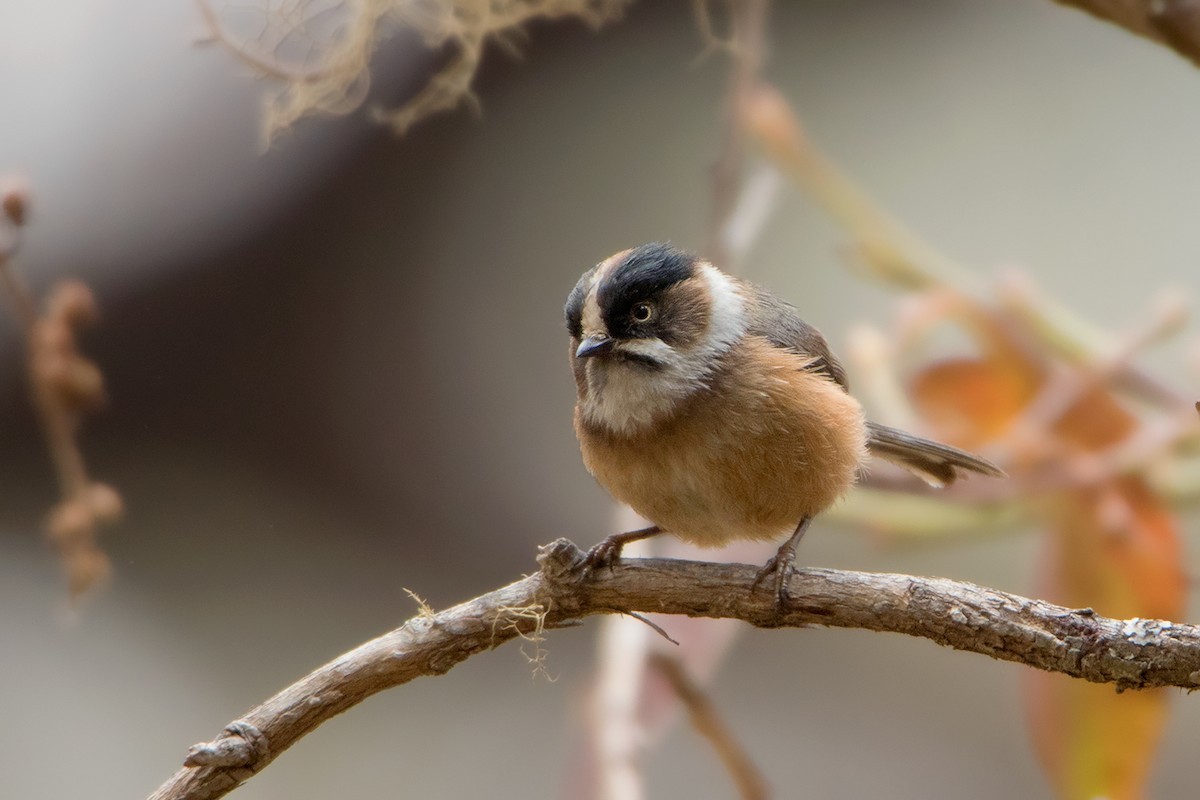Rufous-fronted Bushtit
A species of Eurasian Long-tailed Tits, Also known as Black-browed Bushtit, Burmese Bushtit Scientific name : Aegithalos iouschistos Genus : Eurasian Long-tailed Tits
Rufous-fronted Bushtit, A species of Eurasian Long-tailed Tits
Also known as:
Black-browed Bushtit, Burmese Bushtit
Botanical name: Aegithalos iouschistos
Genus: Eurasian Long-tailed Tits
Content
Description General Info
 Photo By Ayuwat Jearwattanakanok
Photo By Ayuwat Jearwattanakanok Description
The rufous-fronted bushtit is 11 cm long. The adult has grey upperparts and reddish-brown underparts. The head is reddish-buff with a black mask and a silver bib with black streaks and a black edge. Juveniles are paler and duller than the adults. The black-browed bushtit is similar but has a white forehead and belly and a white edge to its bib. The white-throated bushtit has a white forehead and bib and a dark breastband. 
Size
11 cm
Nest Placement
Tree
Feeding Habits
Rufous-fronted Bushtit predominantly consumes insects, their eggs, and larvae, supplemented by some vegetable matter. Forages in the canopy and shrub layers, often in groups of up to 40, especially outside breeding seasons, occasionally joining mixed-species flocks for food.
Habitat
The habitat of rufous-fronted Bushtit predominantly comprises higher altitude temperate forests, with preferences for oak, rhododendron, chestnut, and coniferous trees such as pine, spruce, and hemlock. This adaptable bird also frequents forest edges, clearings, dense forest stands, scrub growth, and riverine scrub above the tree-line. Rufous-fronted Bushtit tends to inhabit certain altitudinal forest zones throughout broader geographical regions, occasionally descending to lower elevations.
Dite type
Insectivorous
General Info
Feeding Habits
Bird food type
Distribution Area
The rufous-fronted bushtit is found in the eastern and central Himalayas in Bhutan, China, India and Nepal. It occurs in montane forests, both broad-leaved and coniferous, up to 3,600 m above sea-level. It typically feeds in flocks. 

 Photo By Ayuwat Jearwattanakanok
Photo By Ayuwat Jearwattanakanok